If you’re asking, “How far should a prop extend below the boat?” you’re not alone—and you’re definitely asking the right question. There’s a fine line between peak performance and costly repairs when it comes to propeller depth. Set it too high, and you risk cavitation. Set it too low, and you’re just creating unnecessary drag and burning fuel for no reason. Getting the prop depth just right is a key factor in dialing in your boat’s performance, speed, and handling. If you’re working on a new setup or tweaking an existing system, we’ve got you covered. Let’s dive in!
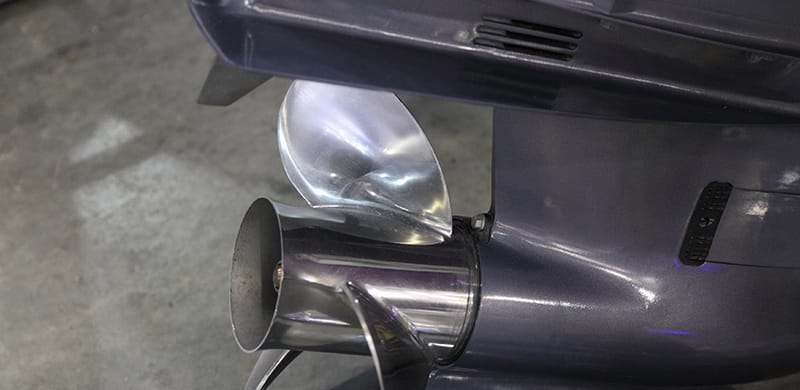
What’s the Perfect Prop Position?
When boaters ask how far a prop should extend below the boat, what they’re really trying to figure out is: What is the correct relationship between the boat propeller, the waterline, and the boat’s hull? Think of your propeller as the muscle of your boat. If it’s not positioned correctly, your engine won’t get to show off its true power, and neither will you.
So what’s the perfect prop position? To answer this question properly, we need to understand some key components involved in the setup.
Understanding the Basics: Prop, Shaft, & Hull
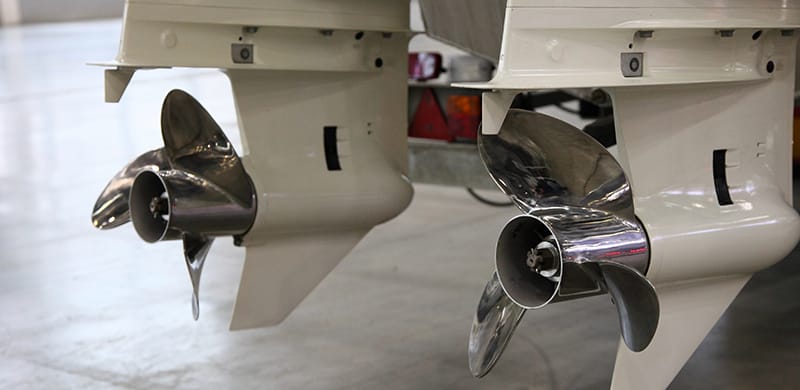
- Prop Shaft: The rotating shaft that connects the engine to the propeller. It’s the bridge between power and movement.
- Hull Bottom: The lowest part of your boat’s hull, often used as a reference point when adjusting motor height.
- Cavitation Plate (aka AV Plate): A horizontal plate above the propeller that helps reduce air from entering the blades.
- Jack Plate: A device that allows vertical adjustment of the motor without drilling new holes in the transom.
- X Dimension: The vertical distance from the center of the prop shaft to the pad (or keel) of the hull.
All of these elements play a role in determining the ideal propeller depth.
So, How Far Should a Prop Extend Below the Boat?
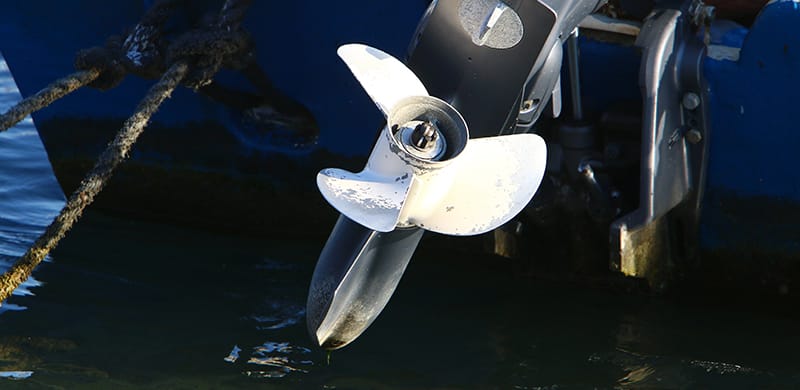
In short, a typical outboard or stern drive propeller should extend about 3 to 5 inches below the hull bottom at rest. But before you go grab a measuring tape, let’s dig deeper.
Variables That Affect Prop Depth
Here are some variables that may affect your ideal prop depth.
1. Hull Design
The shape and style of your hull play a big role in where your prop needs to sit. For instance:
- Deep-V hulls tend to need a bit lower prop position to maintain proper water contact.
- Flat-bottom boats or boats with a pad can typically run a higher setup since they plane faster and ride higher on the water.
Your hull design is the canvas that defines the rest of your setup.
2. Motor Height & X Dimension
Setting motor height is where the real magic happens. It’s all about where the prop shaft sits in relation to the hull bottom. As a rule of thumb, the cavitation plate should sit parallel to the water surface and align with or just below the hull bottom when the boat is level.
Now, let’s talk about X dimension. Your X dimension refers to the vertical distance from the centerline of the prop shaft to the boat’s pad or keel. It’s an elaborate way of measuring motor height, and it’s often customized in high-performance setups. Higher X dimensions typically mean better top speed, while lower ones give you better thrust at lower speeds or when carrying heavier loads.
3. Jack Plate Adjustments
Adding a jack plate to your outboard setup is like giving yourself fine-tuned control over prop depth. With a turn of a wrench or the press of a hydraulic button, you can adjust your motor height on the fly. This is especially helpful for:
- Shallow water conditions
- Maximizing top speed
- Adjusting for load or passenger changes
- Testing and tuning your rig
If you don’t have a jack plate, your adjustments are more limited, but still achievable by changing the hole position on your motor mount.
Signs Your Prop Is Too High or Too Low
Let’s talk about real-world operations. You might not have a ruler handy on the water, but you’ll definitely feel when something’s off.
Prop Too Deep?
If your prop extend is too far below the hull bottom, you can expect:
- Reduced boat speed
- Extra drag
- Lower fuel efficiency
- Difficulty getting on plane
- More noise and vibration
Prop Too Shallow?
If your prop depth is too shallow, get ready for:
- Cavitation (when the prop blades grab air instead of water)
- Slipping at higher speeds
- Over-revving
- Poor thrust
- Water pressure alarms on your lower unit
You’re looking for that sweet spot: not too deep, not too shallow, where the engine, hull, and prop all work in harmony.
Trim, Test, Adjust: Finding the Perfect Setup
Finding the ideal propeller depth isn’t always a one-and-done deal. You may have to test different heights, trim angles, and prop sets to really dial it in. Here’s how to do it right:
1. Start with Manufacturer Recommendations
Every engine comes with a default mounting height. That’s your baseline, and you can use that as a starting point.
2. Check the Cavitation Plate
As a general example, if your AV plate sits flush with the hull bottom and your boat performs well, you’re likely close to the right prop height. If the cavitation plate is riding high and you’re getting air in your blades, you may need to drop the motor a hole or two.
3. Watch Water Pressure
Water pressure is important; it helps cool your engine. If you raise the motor too high, your lower unit may not pull in enough water to protect the motor. Always install a water pressure gauge if you tweak motor height often.
There’s No One-Size-Fits-All Number
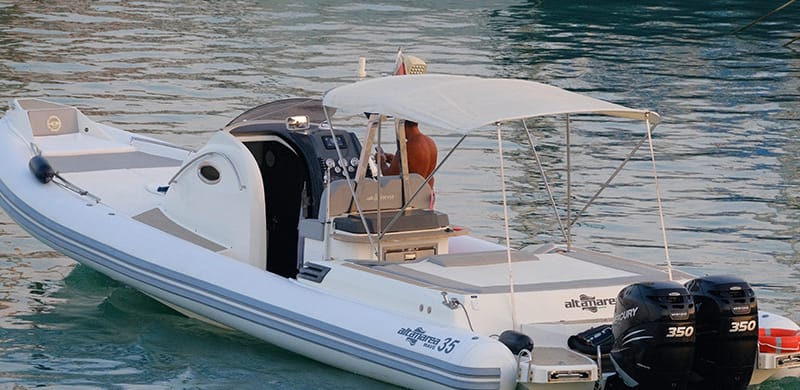
We wish we could tell you there’s a perfect measurement for every boat, but in reality, it’s a bit complicated. The right prop depth depends on your boat, your hull, your motor, and your goals. What works for a bass boat with a jack plate may not work for a pontoon or offshore fishing rig. It’s all about matching your setup to the way you operate your boat.
Tips to Fine-Tune Your Prop Setup
Here are a few extra tips to help you get the most out of your prop setup:
- Start with a baseline. Then make one change at a time, adjust, test, then repeat.
- Keep a log. Jot down top speed, RPMs, hole shot time, and handling after each adjustment.
- Use pictures. Take a picture of your prop set and motor height before and after each change.
- Match your boat propeller to your setup. Sometimes adjusting prop depth isn’t enough; you may need to change blades, pitch, or even material to match your engine and hull design.
- Consider the trim angle. Running too trimmed down or up can give you misleading feedback during tests.
Common Mistakes to Avoid
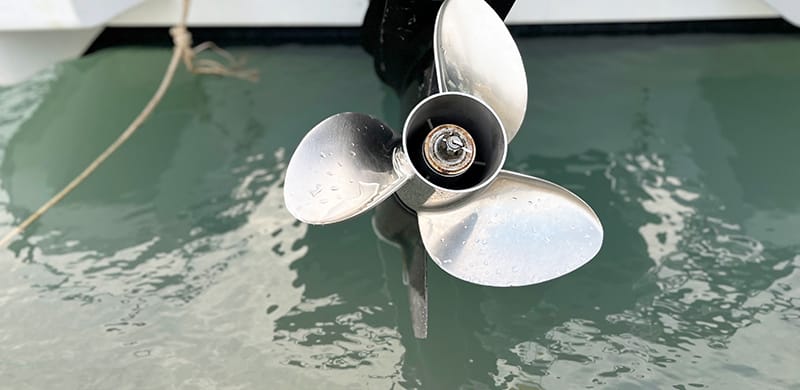
- Don’t set your prop shaft based on visuals alone; test under load.
- Don’t ignore cavitation; it’s not just annoying, it’s damaging.
- Don’t assume factory setup is optimal for your unique hull or boat usage.
- Don’t skip safety; always ensure bolts and fasteners are properly installed when changing motor height.
Final Word: How to Know You’ve Got It Right
You’ll know your boat propeller extend is just right when:
- Your engine stays cool with good water pressure
- Your boat planes fast and clean
- You’re hitting your target top speed
- Fuel usage drops
- There’s little to no cavitation
- Handling is smooth, even at higher speeds
Finding that perfect depth, distance, and dimension is part science, part art—and 100% worth it.
In Summary
The general rule for how far a prop should extend below the boat is 3–5 inches below the hull bottom. Many factors influence this number: hull design, jack plate height, x dimension, and motor type. Don’t be afraid to test, adjust, and fine-tune until your prop, engine, and boat feel perfectly aligned.
When done right, proper prop depth brings better performance, more speed, less drag, and a whole lot more fun out on the water. So the next time you’re staring at your prop shaft, wondering if it’s too deep or too high, remember: the best setups come from a balance of knowledge, observation, and testing.
Prop Depot in Tennessee for Nationwide Prop Shop & Repair
If you’re chasing top end speed, better hole shot, or just need a reliable spare prop, the experts at Prop Depot have your back. Located in Tennessee, Prop Depot is an authorized dealer for all major prop brands like Mercury, ACME and more.
If you want to shop the best propellers or need professional propeller repairs anywhere in the country, Prop Depot is the best place for you. With fast turnaround, OEM parts, and excellent customer service, you can trust Prop Depot to keep your boat’s performance on point.
Contact us today at (865) 673-8171 today to get expert advice or ship in your prop for a quick repair!
